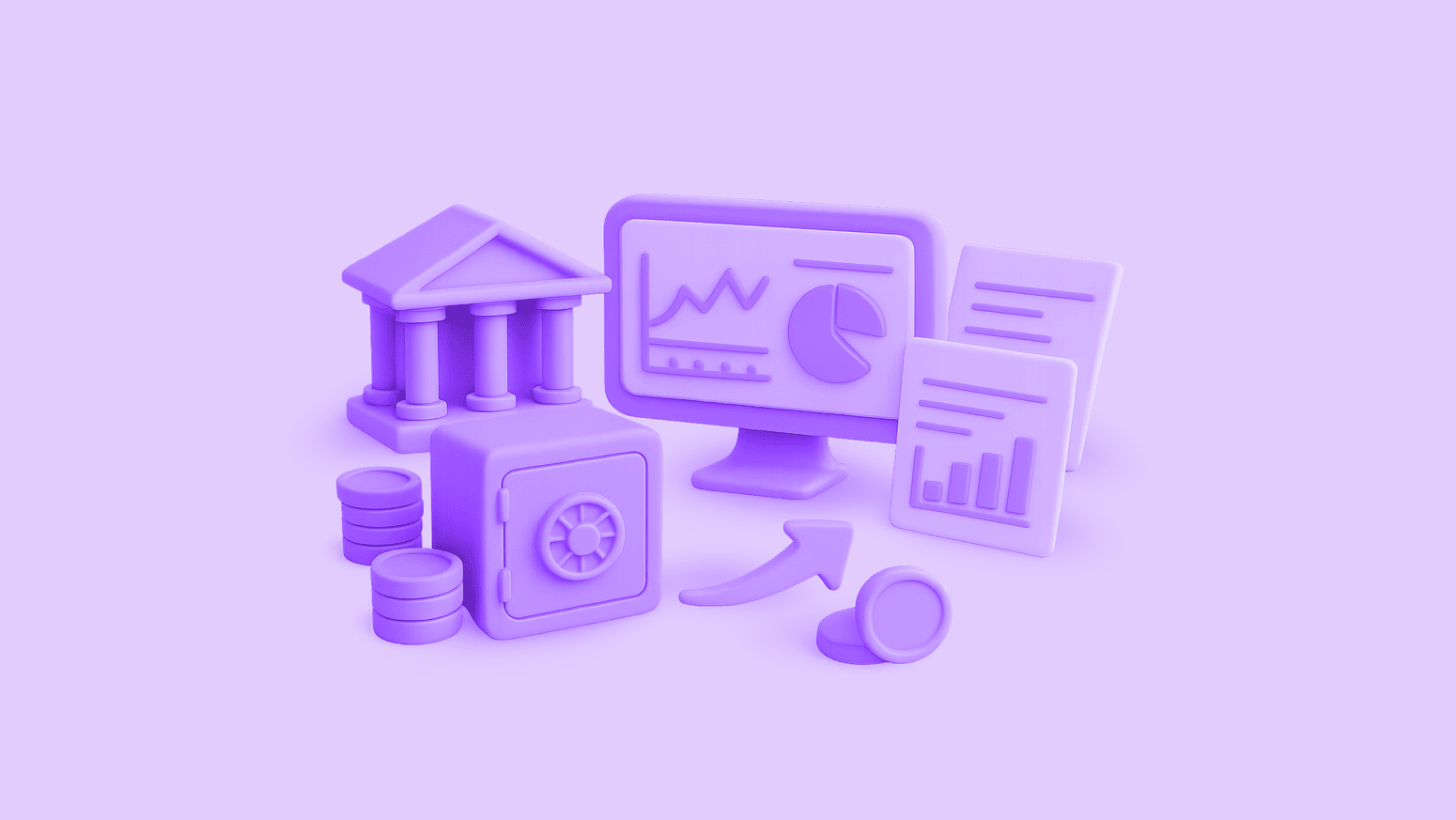Modern HRMS platforms are designed to handle everything from onboarding to payroll, but there’s one step that still slows teams down: salary disbursal.
Even with payroll fully processed, many HR and finance teams still switch between bank portals, upload files manually, and track payouts across multiple spreadsheets. This not only delays payments but also increases the chances of errors and compliance issues.
A multibank connector solves this problem. It allows HRMS platforms to link directly to multiple bank accounts, enabling salary disbursals to happen securely and efficiently, right from the same dashboard where payroll is managed.
What is a Multibank Connector?
A multibank connector integrates directly with your HRMS or payroll management software, allowing salary payments to be made across multiple bank accounts from a single dashboard. Instead of logging into each bank portal individually, finance and HR teams can initiate bulk salary transfers directly from within the HRMS platform.
At a technical level, a multibank connector is an API-driven integration layer that securely connects and aggregates data from multiple bank accounts into a single, unified interface. It sends real-time, encrypted payment instructions to each linked bank, automating the disbursal process and eliminating the need for manual file uploads or bank-side processing.
This is especially valuable for businesses that operate with multiple bank accounts, manage payroll across branches or business entities, or need a centralised, scalable way to handle payouts securely and efficiently.
Why Do HRMS Platforms Prefer Integrating a Multibank Connector
For HRMS platforms, offering payroll calculation alone is no longer enough. Users increasingly expect an all-in-one experience, where salary processing, approvals, and disbursals happen without jumping between systems.
Integrating a multibank connector brings several strategic benefits to the platform itself:
1. Enhanced Product Capabilities
By adding direct bank connectivity, platforms extend their utility beyond just payroll processing. It transforms the HRMS into a complete payout engine—supporting salaries, reimbursements, bonuses, and more, across multiple banks.
2. Increased Platform Stickiness
When users can manage their entire payroll lifecycle—from calculation to disbursal—within a single tool, the likelihood of switching platforms drops significantly. This tighter integration increases engagement and long-term retention.
3. New Revenue Streams
HRMS platforms can include multibank disbursal as part of their premium or enterprise plans. Some may also explore additional revenue through value-added services—such as advanced reporting, faster payout options, or integrations with banking partners. This feature creates opportunities to expand offerings and introduce new pricing tiers.
4. Fewer Support Dependencies
With payments flowing through secure, automated channels, common user pain points—like failed uploads, payout delays, or reconciliation mismatches—reduce significantly. This results in fewer support tickets and a smoother user experience overall.
5. Future-Ready Infrastructure
As payroll automation becomes more mature, integrated disbursal will no longer be optional. Platforms that adopt a HRMS multibank connector today position themselves ahead of the curve, meeting the evolving expectations of modern businesses.
Where It Fits in the Payroll Process
A multibank connector plays a critical role in the final step of the payroll cycle—disbursing salaries. It aggregates multiple bank accounts into a single, unified dashboard, giving finance and HR teams full visibility and control. With payouts enabled, salaries can be disbursed instantly—simply by selecting the preferred bank account and processing the payment. This eliminates the need to log in to multiple banking portals or upload files, making salary disbursal faster, more secure, and error-free.
It enables a continuous workflow:
Payroll calculation → Select bank from connected accounts → Salary payout initiated → Real-time status updates on your HRMS platform
This integration is especially helpful for organisations using more than one bank or managing payments across multiple branches or entities.
To enable this, platforms like OPEN offer a connected banking layer that integrates with payroll systems. Businesses can initiate salary disbursals across multiple banks directly from one dashboard—securely and at scale.
Who Should Use a Multibank Connector?
A multibank connector is useful for:
- Businesses with multiple bank accounts used for salary payments.
- HR and finance teams seeking faster, error-free disbursals.
- Organisations looking to automate their payout workflows.
- Companies aiming to improve payroll security and transparency.
As teams grow and compliance requirements increase, manual banking processes can become a bottleneck. A multibank connector helps avoid such issues.
What to Look for in a Multibank Connector
When choosing a multibank connector for your HRMS software, consider the following:
1. Bank compatibility
Ensure the connector supports a wide range of banking partners—public and private sector banks included—and can process payments via NEFT, RTGS, IMPS, or UPI. Broader coverage means greater flexibility for your users.
2. HRMS integration
The multibank connector should integrate directly with your backend, not something your end users configure themselves. It should be embedded into your HRMS or payroll software through secure APIs, with minimal setup effort for your team and zero disruption to the user experience.
In other words, your users continue to operate within your platform as usual—while the connector works behind the scenes to automate salary disbursals.
3. Security and compliance features
Salary payments involve sensitive financial data, so the connector must meet high security standards. Look for features like two-factor authentication, role-based access control, encrypted data transmission, and detailed audit trails. It should also comply with relevant regulatory frameworks (such as RBI and NPCI guidelines).
4. Ease of use
While integration happens at the backend, day-to-day operations—like initiating disbursals or viewing payout status—should be intuitive for HR and finance teams. The dashboard or interface (if visible) must be clean, reliable, and easy to navigate, without requiring technical assistance.
Why It Matters for Your End Users?
As organisations scale, managing salary payouts manually can become time-consuming and prone to errors. A multibank connector makes it easier to maintain consistency, improve accuracy, and save time on each payroll cycle.
By integrating your payroll management software with a multibank connector, you reduce dependency on manual tasks and enable a faster, more secure way to handle employee payouts.
Why OPEN’s Connector Is Built for HRMS Platforms
OPEN offers a fully hosted, white-labeled multibank connector that integrates quickly with your HRMS, helping you launch salary disbursal features faster and with minimal development effort. It supports 16 of the top 20 banks in India and operates on payout rails that are fully compliant with RBI and NPCI guidelines, ensuring both broad coverage and regulatory alignment.
With OPEN’s pre-built dashboard, you can deliver a seamless, secure, end-to-end experience for your users, without investing in separate bank integrations or ongoing maintenance. It’s a faster way to add more value to your product while keeping the experience entirely under your brand.
Conclusion
A multibank connector is more than just a backend feature—it’s a key upgrade that improves how your HRMS platform handles salary disbursals.
When integrated into your system, it allows users to manage payments to multiple banks directly from the HRMS—no separate portals, no manual uploads. The entire payout process becomes faster, more secure, and easier to track.
This is not something users are expected to set up on their own. They look to their HRMS for a ready-to-use, fully integrated solution. By offering a multibank connector, you add real value to your platform, remove friction at a critical stage of payroll, and deliver the complete experience your users expect.





